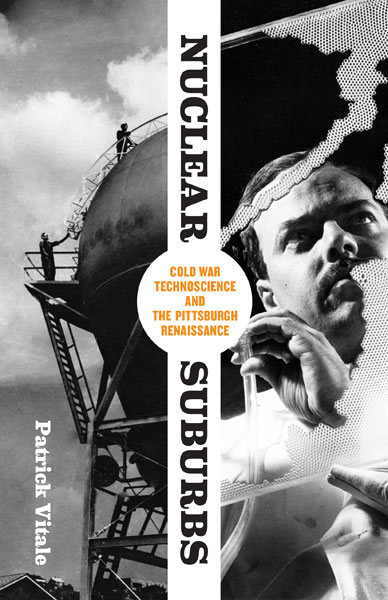- Apply
- Visit
- Request Info
- Give
Published on June 10, 2021
Professor Patrick Vitale's new book ‘Nuclear Suburbs’
Book explains how Cold War technology propelled Pittsburgh renaissance
 Patrick Vitale, assistant professor of geography at Eastern Connecticut State University, recently authored “Nuclear Suburbs: Cold War Technoscience and the Pittsburgh Renaissance.” The book examines the suburbanization of the Greater Pittsburgh area during the Cold War, and how city officials worked with corporate executives to remake the city for a new class of workers.
Patrick Vitale, assistant professor of geography at Eastern Connecticut State University, recently authored “Nuclear Suburbs: Cold War Technoscience and the Pittsburgh Renaissance.” The book examines the suburbanization of the Greater Pittsburgh area during the Cold War, and how city officials worked with corporate executives to remake the city for a new class of workers.
Pittsburgh emerged as the hub of the nuclear industry in the 1950s and 1960s, hosting more privately employed nuclear engineers and scientists than anywhere else in the country. This period of intensifying relations between the United States and the Soviet Union coincided with the “Pittsburgh renaissance,” a time of rebranding for a city with a reputation of being gritty and working-class.
Vitale says city officials used this era of technological momentum to “project an image of a modern city for the middle class . . . unpolluted and post-industrial.” The only problem? Pittsburgh’s largest populations were left out of the business and city leaders’ vision of the future.
“This was not a renaissance for people of color and the working class,” said Vitale, noting that the city’s neighborhoods of color were the areas targeted for “urban renewal.” The Lower Hill District, for example, known as the “Harlem of Pittsburgh,” was targeted for the construction of a cultural center.

Yet, as the city changed shape to attract a wealthier — and whiter — class of scientists and professionals, their workplaces and residences sprouted up not in the center city, but in the surrounding suburbs. Vitale explained that incentives from the federal government encouraged the move to the suburbs to decentralize the industry: “They were worried about having an easy target for the Soviets during the Cold War.”
Vitale finds, however, that the major companies of the time — such as Westinghouse Electric Corporation — were looking to leave the city either way in order “to appeal to scientists and engineers who didn’t want to live in Pittsburgh.”
The story of the Pittsburgh renaissance can be applied to industrial regions across the country, and “Nuclear Suburbs” explains how post-industrial renewal is often rooted in injustice.
“‘Nuclear Suburbs’ offers a new and important insight into the complex relationship between the Cold War, suburbanization and post-industrial capitalism,” wrote Lily Geismer, author and history professor at Claremont McKenna College, in a book review. “Patrick Vitale expertly reveals how deeply enmeshed scientists’ lives and work were in the economic and spatial restructuring of cities like Pittsburgh. It provides a powerful, important retort to anyone suggesting that science and knowledge workers are the solution to urban problems.”
“Nuclear Suburbs” was published by University of Minnesota Press in February 2021.
Written by Michael Rouleau

